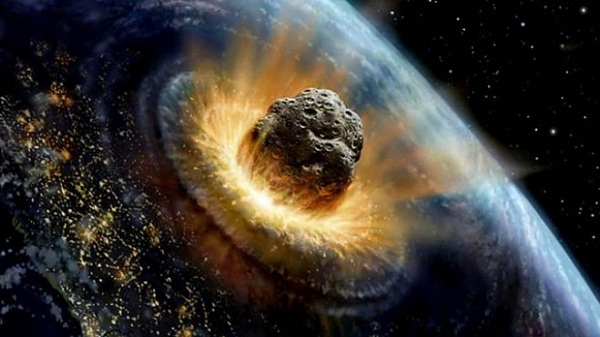This post will have a much better effect if you click here to listen to some dramatic music while you read.
Forgive me for the sensationalist headline. We’re not gonna die. You can turn the music off now.
Well we are gonna die, but not by the Apophis asteroid. However, there was a period following its discovery in 2004 during which the experts gave Apophis around a 3% chance of striking Earth. At ~1,000 feet across, the space rock would have been large enough to pass through our atmosphere and devastate an area around the size of Texas…or Connecticut, depending on whom you ask. I’ll stick with Texas.
More recent calculations have completely ruled out Apophis’ chance of striking Earth both in 2029 and its return orbit in 2036 (if you’re still listening to the music, definitely turn it off now). Still, if we go outside and look up at the sky on April 13, 2029 (which is Friday the 13th – consider playing music again), we will see a moderately brilliant light flash across the sky. I was hoping it would be a bit more dramatic, something like this:

…but it will probably be more like this:

That’s right, just a normal starry sky. Oh well, can’t win ’em all. On the bright side, we won’t be annihilated, although Apophis does have the potential to take out some satellites if we’re lucky. The odds of that are still quite low. Basically, there’s nothing exciting about this asteroid…except! the main reason I wanted to write about it…
In theory, we could travel out to the Apophis asteroid, or another one that’s scheduled to make a close path to Earth, land on it, use the space thrusters to alter its path and arrival date such that it passes through the gravitational fields of Earth and the moon perfectly in order to put the asteroid into a steady orbit around Earth. At that time, we could send out teams of astronauts and engineers to mine the asteroid for all of its raw materials.
These materials include iron, nickel, cobalt, platinum, and most importantly water which could be used not only to provide sustenance for the exploration teams, but also to be broken down into hydrogen and oxygen for rocket fuel. The iron, nickel, and platinum could be used to build settlements and satellites and solar panels and all kinds of fun stuff, not to mention sending a bunch of the platinum back to Earth. We’re talking the potential for hundreds of billions of dollars in profits from a single asteroid, and the potential to colonize the moon since moving the raw materials from the asteroid to the moon would be much easier and cheaper than moving them from Earth to the moon.
Here’s a cool infographic showing how it could work:

So there you have it: asteroid mining. The Apophis asteroid is a prime candidate for such an endeavor, and as we all know, where there is profit, there is a way. I think that’s how the saying goes.
